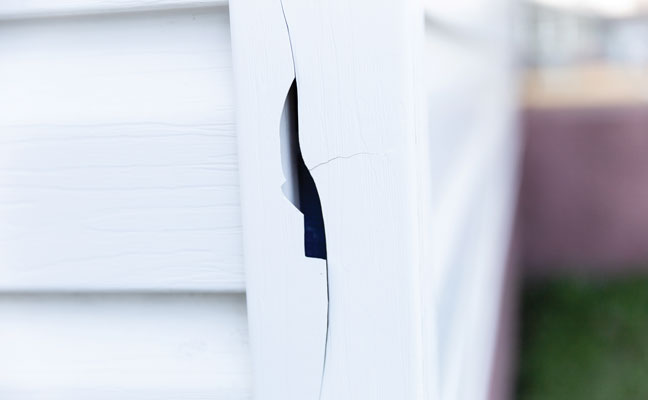
Corner posts for exterior siding often deteriorate over time, creating entry points for mice. (Photo: nathan4847/iStock / Getty Images Plus/Getty Images)
When it comes to house mouse (Mus musculus) control, pest management professionals (PMPs) tend to focus lots of time and attention on corners. Dark, hidden corners are often the favorite hangout for mice, and this is evidenced by the disproportionately large number of droppings observed in these areas compared to other locations. This is because mice consider corners relatively safe, protected places.
But room corners aren’t the only place to focus when it comes to mouse control and prevention. A comprehensive management plan should include an emphasis on exclusion, so PMPs should consider taking a closer look at two specific corners as part of their inspections:
1. Overhead or garage doors. Over time, the seals at the bottom corners of these doors begin to deteriorate. Mice will take advantage of brittle or broken door seals to enter a building. To determine whether door maintenance is required, close the door, turn out the lights, and observe the seal from inside. If light is leaking in from outdoors, it’s time for your client to repair the seal.

Jim Fredericks
2. Outdoor corner posts. Every outside corner of a building outfitted with vinyl siding has pieces of trim that run from the bottom edge of the siding to the soffit, called corner posts. These trim pieces hide the edges of the siding and provide a neat and professional finish. Corner posts, however, are notorious entry points for overwintering pests, and provide a highway from ground level directly to the attic for invading mice. Specifically designed plugs can be installed to block these entry points, or they can be stuffed with materials designed for pest exclusion. Just make sure that any rain or moisture has a way to drain.
Mouse immigration pressure reaches its peak as the weather cools, but exclusion efforts focused on these commonly compromised corners can reduce callback pressure through the winter months.
Leave A Comment